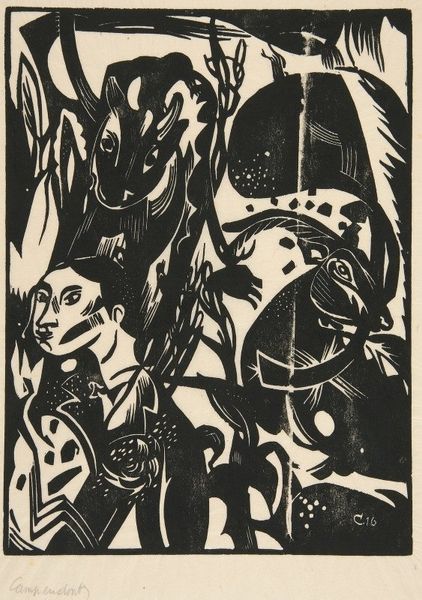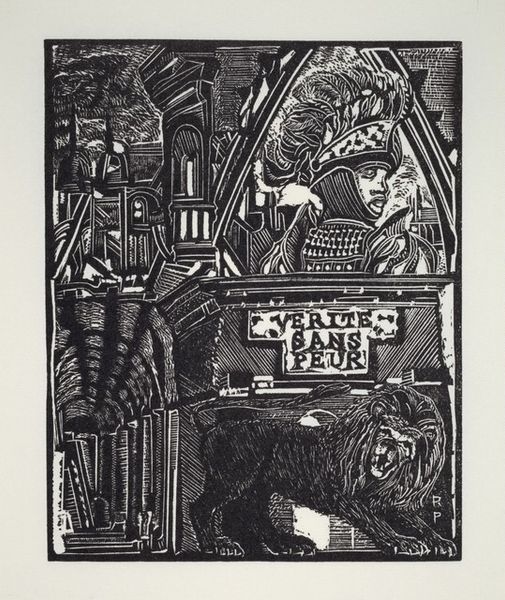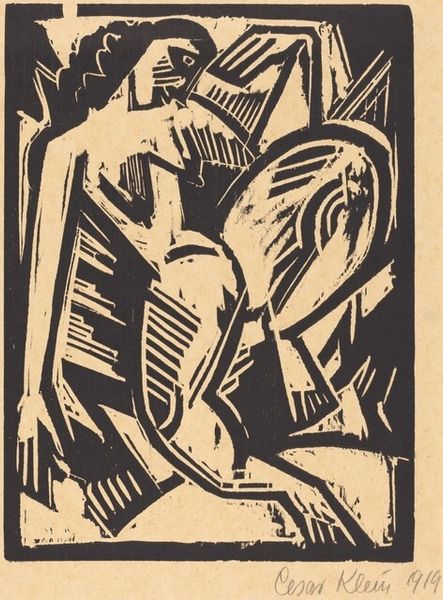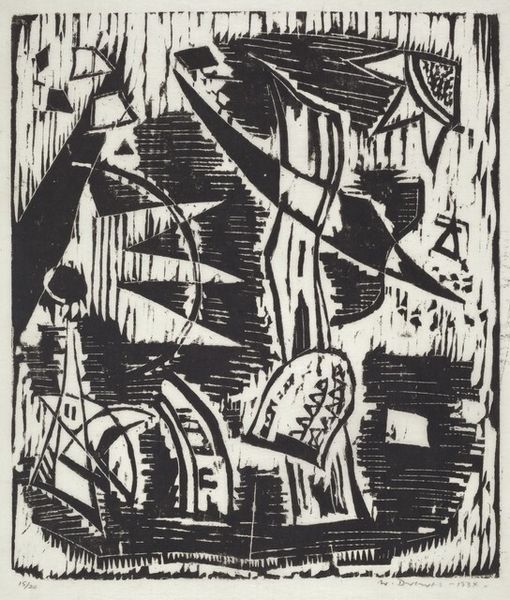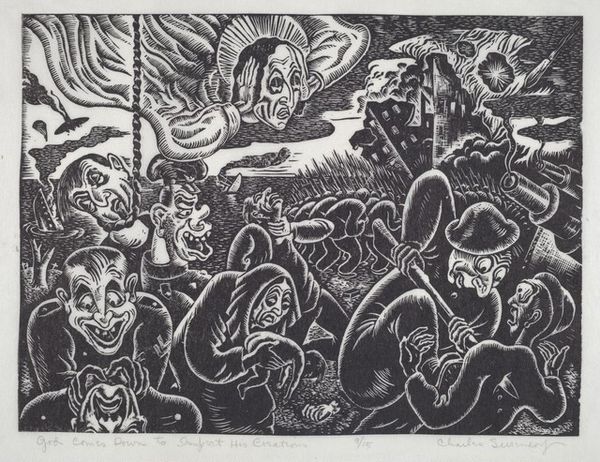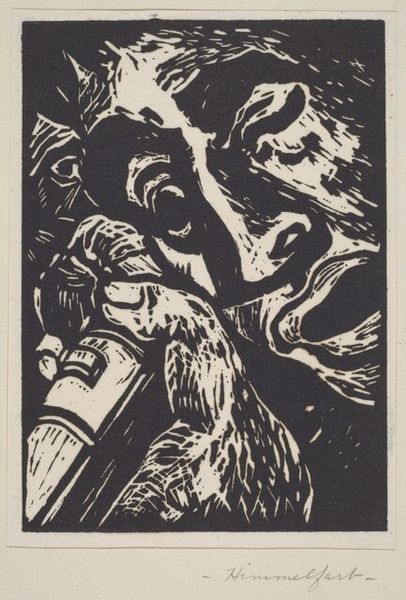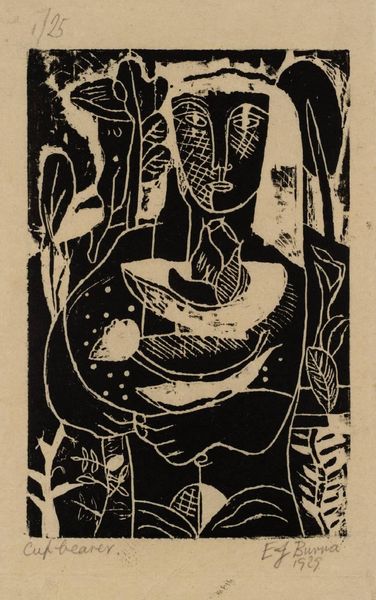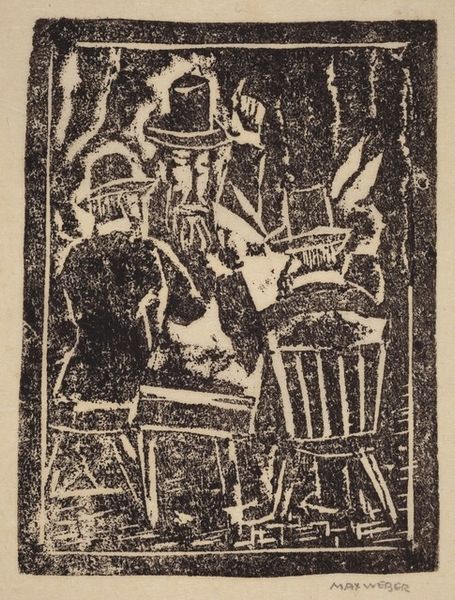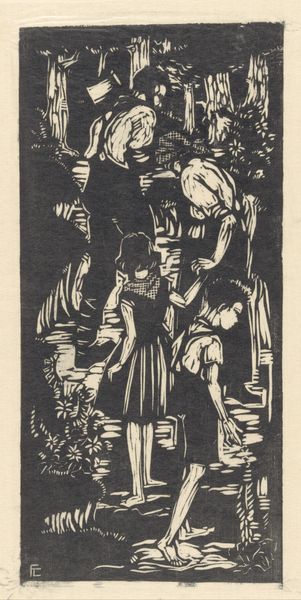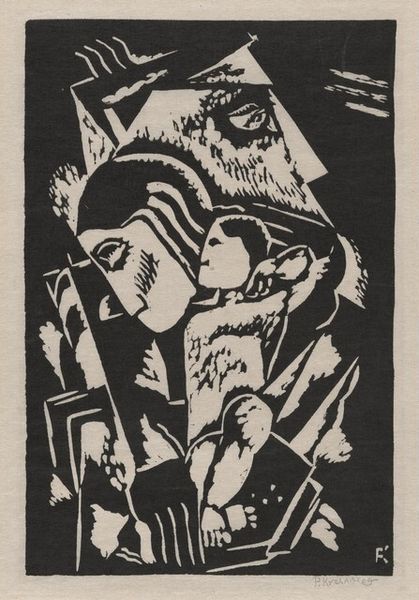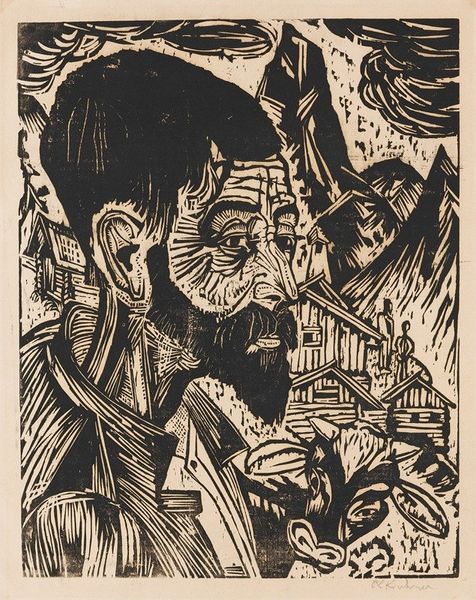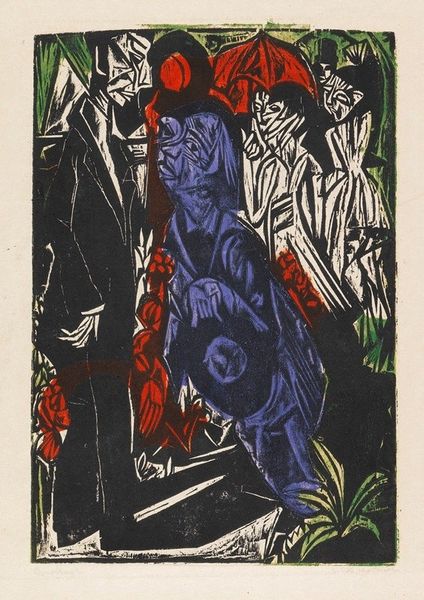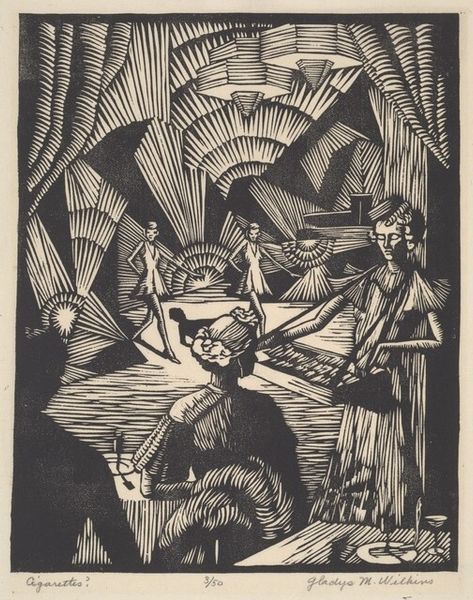
drawing, print, ink
#
drawing
#
ink drawing
# print
#
pen sketch
#
figuration
#
ink
#
black-arts-movement
#
genre-painting
Dimensions: stone: 210 x 148 mm paper: 305 X 205 MM
Copyright: National Gallery of Art: CC0 1.0
Curator: Oh, hello. So this expressive work here is entitled “Untitled (Jazz)” by Alexander King. It is a print that also features ink drawing and pen sketch. What do you make of it? Editor: My first thought is “cacophony.” There's such a riot of figures, of expression—the high contrast between the ink and paper really emphasizes the, frankly, grotesque faces. Curator: Grotesque, huh? I find it… theatrical, in a way. There's almost a Vaudeville energy, heightened by the stylization. A raucous celebration. You get a strong sense of performance and the bold presence. Editor: I read a sinister edge into those performative aspects. The stark black and white and the exaggeration seem almost to caricature… Are we sure of the context here? Curator: Alexander King worked within the Black Arts Movement—so his pieces often center on the Black American experience and aesthetic pride. I wouldn’t necessarily agree that he's aiming for caricature, but it prompts some really great discourse about intention and representation. He may want to emphasize strength but it lands into conflicting racial readings and stereotypes. What do you mean though? Editor: Right. The Black Arts Movement was so diverse. And there were internal tensions surrounding what Black art "should" be. In that framework, this could also be interpreted as critiquing the performance of Blackness for a white gaze or pushing back against idealized portrayals by showing Blackness in its grit and intensity, to dismantle some conventions of beauty. Curator: It’s interesting, your thinking does lead me down the rabbit hole of masking, blackface, and all the painful histories that this calls forth... He uses the linework almost as shorthand; the faces become almost iconic— instantly conveying certain types of emotions. Anger, joy, pain, love—it all simmers beneath that crowded table. What emotions are these faces reflecting, though? Editor: Exactly! And it’s that instant readability, I think, that makes me wary. The broad strokes with which these figures are drawn teeters dangerously close to dehumanization, despite its rich context of representing blackness, Black arts movement, black identity and so on... Maybe, like you’ve touched on, that he wanted to evoke. Curator: That’s so valid. All these years looking at this piece, I feel like I had blinders on but you are making me see it in an entire different and challenging way! Thanks, always, for shaking things up. Editor: The feeling's mutual! It's precisely the dynamism in the perspectives of the art we both work on, right? It’s an intellectual playground.
Comments
No comments
Be the first to comment and join the conversation on the ultimate creative platform.
